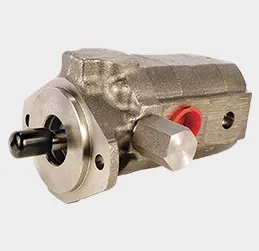Efficient Techniques for Stamping Stainless Steel Components in Manufacturing Industry
Stamping Stainless Steel Parts An Overview
Stamping is a highly efficient manufacturing process commonly used to produce a variety of metal parts, including those made from stainless steel. This technique, which involves the use of die and press machinery to transform flat stainless steel sheets into desired shapes and components, is renowned for its precision, speed, and capability to produce complex geometries. Understanding the process of stamping stainless steel parts can provide insights into its applications, advantages, and some considerations to keep in mind.
The Stamping Process
The stamping process begins with the selection of appropriate stainless steel, which is favored for its corrosion resistance, durability, and aesthetic appeal. The most commonly used grades for stamping include 304 and 316 stainless steels. Once the sheet metal is chosen, it is fed into a stamping press, where dies are used to cut, bend, or draw the material into the defined shapes.
There are several stamping techniques, including blanking, piercing, bending, and deep drawing. Blanking involves cutting out shapes from the sheet metal, while piercing creates holes. Bending changes the angle of the metal to form desired edges, and deep drawing shapes the metal into a cup-like form, making it essential for creating deeper components.
The precision of the stamping process is one of its significant advantages. Stamping machines can produce parts with tight tolerances and repeatable quality, which is crucial in industries requiring high precision, such as automotive and aerospace sectors.
Applications of Stamped Stainless Steel Parts
Stamped stainless steel parts are utilized across various industries due to their strength and resistance to corrosion. Common applications include automotive components, electronic housings, kitchenware, and industrial equipment. For instance, automotive manufacturers use stamped parts for brackets, frames, and body panels, due to stainless steel's durability and ability to withstand harsh environmental conditions.
stamping stainless steel parts

Additionally, the food industry often relies on stainless steel stamping for kitchen utensils, appliances, and processing equipment, ensuring hygiene and resistance to corrosion. Moreover, in the medical field, stainless steel stamping is critical for producing components like surgical instruments and medical devices, where cleanliness and precision are paramount.
Advantages of Stamping Stainless Steel Parts
The use of stamping for stainless steel parts offers numerous benefits. One of the primary advantages is the high volume of production possible with this method, making it cost-effective for large-scale manufacturing. The speed of the stamping process allows for quick turnaround times, which is essential in fast-paced industries.
Another notable benefit is the material efficiency achieved through stamping, as it generates minimal waste compared to other manufacturing methods. The ability to produce complex shapes and designs in a single operation also leads to savings in assembly time and costs.
Furthermore, stamped stainless steel parts exhibit excellent strength-to-weight ratios, which are critical for applications where weight is a concern. The inherent properties of stainless steel also contribute to the longevity and performance of the end products.
Considerations in Stamping
While stamping stainless steel parts is advantageous, there are several considerations to keep in mind. The initial tooling and setup costs can be substantial, requiring careful planning and design. Additionally, the selection of appropriate grades of stainless steel is crucial to ensure the desired properties, such as formability and weldability, are achieved.
In conclusion, stamping stainless steel parts is a vital process in modern manufacturing. Its ability to produce high-quality, precise parts quickly and efficiently makes it indispensable across various industries. As technology continues to advance, the stamping process will likely evolve, offering even greater efficiencies and capabilities for producing stainless steel components.
-
Precision Sheet Metal Stamping Manufacturer | Fast & ReliableNewsAug.01,2025
-
OEM Sand Cast Pump Valve Fittings - Baoding Hairun Machinery And Equipment Trading Co., Ltd.NewsAug.01,2025
-
Custom OEM Impellers | High Efficiency & PrecisionNewsAug.01,2025
-
OEM Sand Cast Pump Valve Fittings - Baoding Hairun Machinery | Customization, Quality AssuranceNewsAug.01,2025
-
OEM Sand Cast Pump Valve Fittings - Baoding Hairun Machinery And Equipment Trading Co., Ltd.NewsAug.01,2025
-
OEM Sand Cast Pump Valve Fittings - Baoding Hairun Machinery And Equipment Trading Co., Ltd.NewsJul.31,2025















